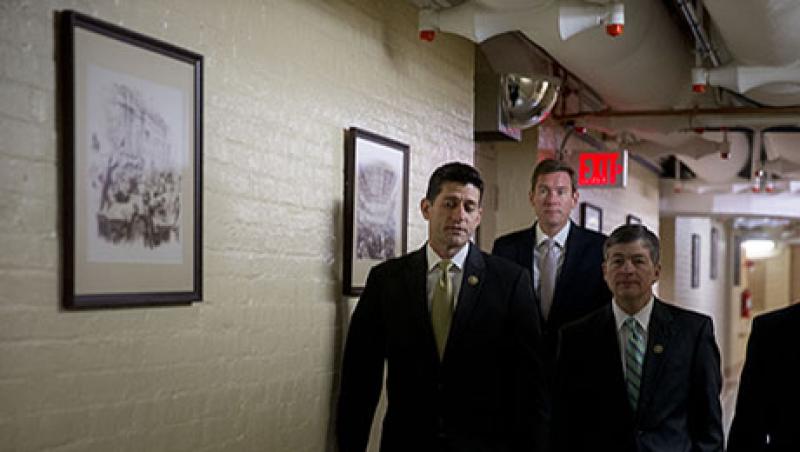With the U.S. expected to reach its borrowing limit on November 3, House Republicans have been in chaos as they try to find a successor to House Speaker John Boehner, with Paul Ryan conditionally offering himself Tuesday. Given the tumult in Congress, an immediate resolution to this potential fiscal debacle seems improbable. The natural question is, How worried should investors be about the impending debt ceiling deadline?
The short answer is, It depends, and that uncertainty could increase volatility in the markets in the weeks ahead.
Our baseline view at PIMCO is that Congress will raise the debt limit in time to avoid any possibility of a U.S. default. Why? Boehner, who plans to step down later this year, can bring a “clean” debt ceiling bill to the floor and pass it with a majority of Democrats and a minority of Republicans, without having to worry about the fallout from his party’s more conservative flank. Whereas Boehner will certainly try to extract concessions in negotiations under way with the White House, we believe he is nevertheless prepared to move a clean debt limit bill — even in the likely event that a broader deal with the White House never materializes. After all, the last thing Boehner wants is for his final action in Congress and ensuing legacy to be a U.S. default.
Nonetheless, the likelihood of a so-called left-tail event, in which there is a policy mistake — a technical default or worse — increases as we get closer to the November 3 deadline without a resolution. From the date it returns from recess, Congress only has eight days to pass a debt limit increase, which does not allow a lot of time for the usual congressional dithering. Add to that the high-drama speaker’s race and the possibility that Ryan, or whoever else winds up replacing Boehner, may feel compelled to force a more extreme outcome, and the chances of a debt limit breach are certainly not remote.
Markets have been relatively sanguine about a possible default, though yields on Treasury bills have begun to move higher. Investors still appear to be taking their cues from other key events, such as U.S. economic data and developments in emerging markets. During previous debt-ceiling debacles, some short-term Treasury yields skyrocketed when investors feared they may not be repaid on time.
If past is prologue, however, we should start to see markets react more as we get closer to the deadline without a deal. During similar situations in 2011 and 2013, we saw a significant sell-off across both the equity and bond markets in the weeks leading up to the deadline. For instance, the Standard & Poor’s 500 index declined by more than 16 percent before the 2011 debt ceiling resolution, whereas it fell by 3.8 percent in the two weeks before a deal was announced in 2013. What if Congress does not come up with a deal by the deadline? Although there are questions about whether the Treasury Department could mitigate the potential impact of a debt ceiling breach by prioritizing certain payments after the Treasury’s small cash cushion is exhausted, the market reaction would nevertheless be extreme — and potentially catastrophic.
Whereas investors are much better prepared than they were in previous episodes, a debt ceiling breach would still have significant knock-on effects, starting with the plumbing of our financial system. Delayed interest and maturity payments for the affected Treasuries would be one consideration, and the liquidity of Treasury securities owned in investors’ portfolios and corresponding repurchase agreements, which act as the grease for the financial system, may also be impaired. What’s more, if there is not an immediate resolution, that could lead some to call into question the U.S. dollar’s sacrosanct reserve currency status, which provides significant flexibility to the U.S. in terms of both its monetary and fiscal policy.
Such a dire scenario is not our base case. We believe Congress will raise the borrowing limit in time, although likely not until the 11th hour and only after some corresponding market volatility. Given the disarray in Washington now and the clock running out, however, a tail event — a scenario in which the debt ceiling is not raised and extreme market volatility occurs — should not be ignored.
Libby Cantrill is an executive vice president the New York executive office, where she helps monitor, analyze and coordinate the firm’s response to public policy, including regulatory and legislative issues; and Jerome Schneider is a managing director in the Newport Beach, California, office and head of the short-term and funding desk; both at Pacific Investment Management Co.
Get more on macro and on regulation.






